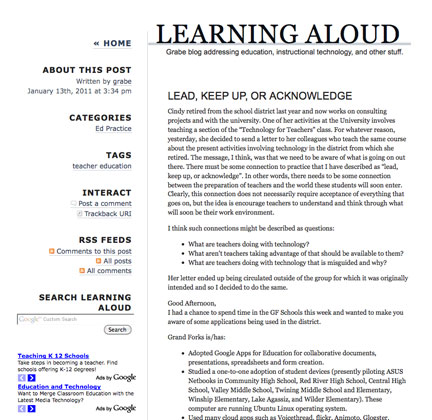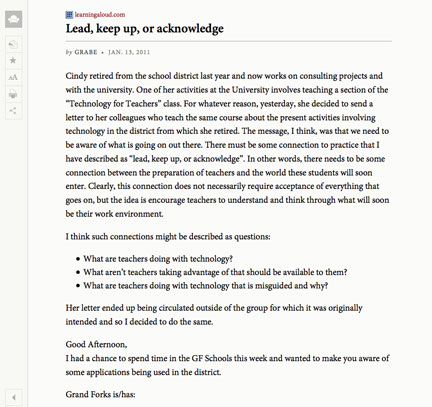Cindy and I had a brief argument over coffee this morning. It turns out I had skimmed an editorial in the GF Herald (I mean, really, who reads the Herald carefully). The source was an opinion piece written by Tom Dennis concerning the differences between the way North Dakota and Wisconsin have addressed teacher concerns (my comments on teacher unions can be found elsewhere). Dennis makes the point that ND continues to allow public sector unions to exist. This is what I focused on and probably the point at which I went back to reading on my iPad.
She was right – the Dennis position is a little convoluted, but here is the next section that I did not read carefully enough:
Because North Dakota law keeps public-sector unions comparatively weak. That has kept public-sector wages and benefits, including pensions, below the national average — sometimes far below.
And that, in turn, has kept the heat of resentment against the public-sector workforce and state government turned down very low.
…..
Because North Dakota voters still think they get value for their tax dollar. And it really is as simple as that.
Let me begin with this – imagine yourself trying to process this as a college student with some academic talent. Is this the kind of message that would encourage you to focus on education as a career and on North Dakota as your destination?Imagine trying to process this as a parent of a college student knowing your kid has the aptitude to do well in whatever major he or she decides to pursue.
Imagine this when applied to another profession that draws on students with comparable service-oriented values – “come to North Dakota, we pay our nurses less.”
So, the issue with teacher salaries is not just that the salaries can be poor, it is also about the public attitude toward those who teach. I encountered this post from a well-known education blogger in Texas. This is what I was reading on my iPad.
How about this – tell a teacher you are sorry we take advantage of them. Use “we are cheap” as an excuse if you can think of nothing else.
![]()

